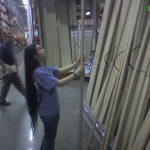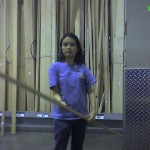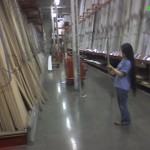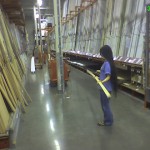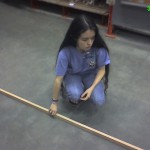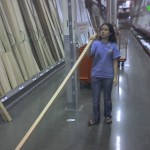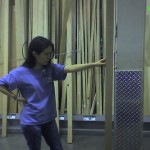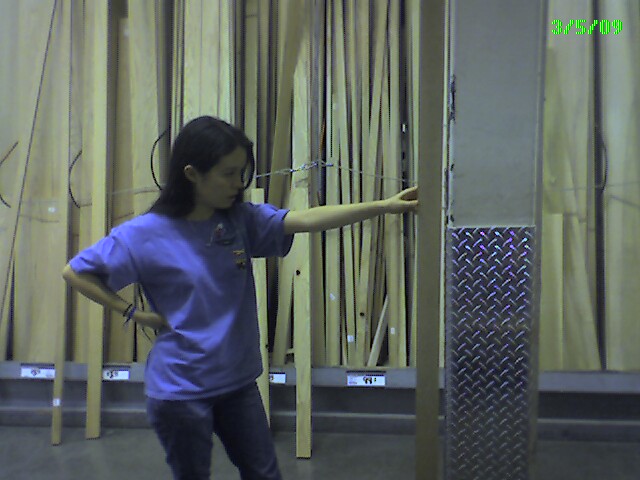
On Thursday (March 5), I went shopping with my father at the Honolulu Home Depot for wood and other supplies (wood glue, and a rasp). I’d called ahead to make sure they had the type of wood I wanted, red oak. When I got there, I sorted through all the stacks of red oak to find a piece of wood with straight grain, a high amount of late growth, no warping, and no knots. It took me over an hour to sort through the small stacks they had- but I came out with three pieces of wood: a maple board, a red oak board, and a popular board. The red oak and the popular were relatively straight grained, and would be good for a bow. The maple board was a beautiful color, and I think I’ll be able to use it for the riser on my bow.
- A lot of people looked at me as they walked by… probably because I’d taken out a lot of lumber.
- wielding wood
- looking at the grain
- checking the weight of the wood
- checking for warping
- checking the end grain, looking at late growth vs. early growth
- measuring the length
Time spent: ~1hr 30min
Technical Terms explained:
Riser: the handle of the bow
Bowyer: a person who makes bows
Late growth and Early growth: In areas where there are distinct seasons, trees grow in patterns seen as growth rings in cross-sections of a tree’s wood. These growth rings usually have two parts. The early growth, also known as spring growth, is formed when the tree grows rapidly, early in the season. Late growth, or summer growth, is formed later, and is often more dense. One can usually differentiate between late and early growth, because of a difference in color. Late growth is usually darker than early growth, although in some trees it is the other way around. Because of late growth’s density, it is more desirable for bows, since it is less likely to break, and it has more tension, producing a more powerful bow.
A note on warping: Depending on which way the board is warped, warping can be either relatively neutral to the usefulness of a board, or render a board unusable. If the board is warped in the way the bow would bend, then the board is still usable. However, warping from side to side, or warping where the board is curved in makes a board unusable.
A note on knots: Knots, while they look interesting, are not fun for the beginning bowyer. Knots are spots of instability on the wood, places where branches once grew. Knots break up or warp the wood’s grain, so if tension is applied, they often break. More experienced bowyers can create “character bows”, bows that move with a warped grain, but for a beginning bowyer like me, knots are an unwelcome obstacle.
